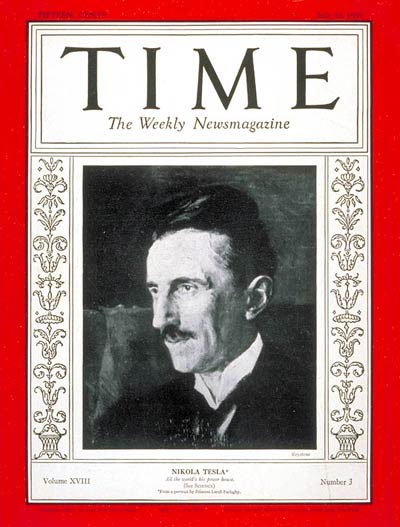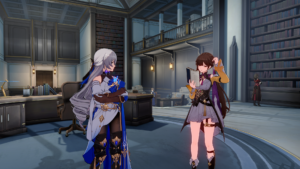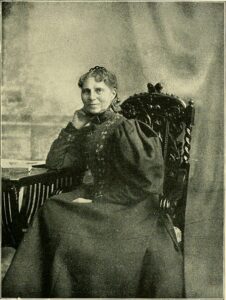Nikola Tesla, more commonly remembered as the inventor of technologies such as the Tesla Coil, was a Serbian-American Scientist, inventor, physicist, mechanical and electrical engineer. Tesla was born on July 10, 1856, in the Austro-Hungarian Empire, which is now known as present-day Luka, Croatia. As an adult, he studied both Mathematics and Physics at the University of Graz and philosophy at the University of Prague. In 1884, at the age of 28, Tesla immigrated to the United States in the search of both freedom and opportunity.1 In June of that same year, Tesla finally set foot in the United States, penniless, but still full of ambition fueled by his dream to revolutionize the world through advancements in electricity.
In the days following his arrival, Tesla was given the opportunity to meet with none other than Thomas Alva Edison, the inventor of the phonograph, the incandescent lightbulb, and the early motion picture camera, just to name a few. More notably, Edison was recognized for the invention of direct current, which was at the time the most popularly used form of electricity.2 His newfound fame distinguished him as a very important and influential person during that time. And Edison recognized the potential that Nikola Tesla possessed, and employed him to work under his supervision.
After months of working under Edison, Tesla began to form a close bond with him, earning the position and title of Edison’s apprentice. Being an apprentice and working closely on research and inventions with Edison himself, Tesla was able to test and further his knowledge on scientific inventions and eventually was able to test theories and inventions of his own. Unfortunately, with this expansion in his capacity of understanding, Tesla was able to analyze certain faults and options for improvements in Edison’s inventions. When he confronted Edison about possible improvements that could have been made to the functioning of direct current, Edison blatantly opposed any of the claims suggested by Tesla. Consequently, both men got caught up in an argument, and Tesla was coerced into resigning from working with Edison.3

However, Nikola Tesla’s improvements in terms of electricity drove him to establish a new form, known as the practical alternating current (AC) motor. This type of current functioned using two sources of alternating current that worked out of phase with one another by creating a rotating magnetic field that would serve as a motor.4 In addition to this, Tesla also introduced his own version of lightbulbs, commonly known as fluorescent light bulbs.5 With the introduction of the AC motor, a lighting system that proved to be more efficient than Edison’s, and a new type of lightbulb, Tesla had managed to slowly take out the competition that he had with Edison. As more people started investing in AC networks, the less people remained with Edison’s “alternate” direct current. With the help of investors such as Westinghouse and J.P. Morgan Jr., Tesla was able to dominate the market for electricity and rise to fame.6

Other advancements made by Nikola Tesla were in the medical field, namely, with medical practices using “Tesla Currents,” which used a form of electrotherapy to produce heat in tissues of the human body; and in other procedures such as “teslinization,” which is where Tesla Coils were used on patients to stimulate high frequencies of electric fields within the body. One of the more recognized inventions made by Tesla are the earliest forms of X-Ray machines.7 Today, we use x-rays in a great deal of medical procedures that require the need to further analyze the condition of patients in areas that are not immediately visible to the human eye. This breakthrough in medicine was made possible by the development of radio, wireless transitions of energy, the discovery of rays that could help penetrate the human tissue, and the use of Tesla currents in medical procedures.8 With these various types of practices and inventions, Nikola Tesla was able to effectively make his mark on the medical industry, most of which still exists in the equipment and practices we use today.
It is no secret that Nikola Tesla represents an ideal example of the American dream; a poor Siberian immigrant leaving everything behind and moving to America to pursue his dreams and making a difference. Undoubtedly, Nikola Tesla has proven to be one of the most influential scientific minds in the fields of medicine, physics, mathematics, and engineering. In his lifetime, he managed to do the things that many of wish to be able to do, which is to revolutionize the way we view the world through ingenuity, innovation, and persistence. Tesla has managed to make his mark on the world and leave his legacy in American History.
- L F. Haas, “Nikola Tesla (1856-1943),” Journal Of Neurology, Neurosurgery, And Psychiatry 72, no. 4 (Feb 2017): 526. ↵
- Guillaume de Syon, “Tesla: Inventor of the Electrical Age,” Canadian Journal Of History 49, no. 2 (August 2014): 347. ↵
- Jill Jonnes, Empires of light: Edison, Tesla, Westinghouse, and the race to electrify the world (New York: Random House, 2003), 50-79. ↵
- Ronald H. Bailey, “Tesla: the wizard who electrified the world,” American History, no. 2 (2010): 52. ↵
- Oliver Graydon, “Master of electrons and photons,” Nature Photonics 9, no. 6 (June 2015): 345. ↵
- Bernard Carlson, “Tesla: Inventor of the Electrical Age,” Publishers Weekly 260, no. 14 (April 8, 2013): 54-55. ↵
- Danijela Vučević , Drago Đorđević, and Tatjana Radosavljević, “Nikola Tesla and medicine: 160th anniversary of the birth of the genius who gave light to the world – part I,” Medicinski Pregled, Vol 69, No 9-10 (2016): 313. ↵
- Vladimir and Milan Baltić, “Nikola Tesla discovered ‘very special radiation’ or X-radiation,” Archive Of Oncology 15, no. 3-4 (Feb 2017): 100-105. ↵



38 comments
Carlos Hinojosa
Tesla was a genius put in the wrong time period that was way beyond his time period and due to that was limited by his time period as well. He invented things that today we are barely learning how to grasp, he invented things that he considered too dangerous for human or government hands and destroyed them himself. If he were born in our time period, I am 100% certain that he would have changed the world, for worse or for the better of humanity. I could not tell you.
Antonio Coffee
Tesla was an amazing man with an unmatched mind for his time. He was responsible for inventing many of the inventions that we continue to use to this day. Alternating current is still the most common forms of electricity used in households today. Tesla had a lot left to give this world and it is amazing to think of what inventions he could have created if he was here longer. Tesla was ahead of his time and was certainly a leader in the technological field.
Engelbert Madrid
Nikola Tesla was absolutely a genius. He dedicated his time to find a way to make artificial light, and, fortunately, he accomplished it. It is good to give credit to Thomas Edison for also discovering electricity; however, Tesla also discovered it and he perfected it as well. Also, it’s surprising to me that Tesla also wanted to use electricity for medicine, which is a great thing for modern science as well.
Uzziyah Cohen
This article was filled with exciting information. The contributions that Nikolai Tesla made to our society in the way of electrical innovations are phenomenal! I can’t imagine what medicine would be like today without the use of x-rays, or what library was libraries would be like without fluorescent lighting. I’m actually reading under Florescent lighting asI’m writing this Response. In spite of Nikolai Tesla’s arrival to America without money or assistance, he was able to accomplish tremendous success in the way of mathematics science physics and medicine. And as the author stated, “in his lifetime he managed to do the things many of us wish to be able to do…”
Mariah Cavanaugh
I along with everyone else am rather familiar with Thomas Edison. I cannot say the same thing about Nikola Tesla. I had no idea that Tesla had such an impact on the medical field. After reading your article I started to feel that Tesla’s accomplishments are not getting the recognition they deserve. He seems to be overshadowed by Edison. Great job!
Maisie Favila
I had never really heard of Tesla before, so reading this article was interesting. I am glad I did because now I am informed on the inventions he created and what not. It’s crazy that not many people know about him, including myself, but are aware of others such as Isaac Newton. He invented such a common thing that we don’t even think about, in the medical field and outside of it. Overall, this article was very well written and I enjoyed learning about Tesla.
Sofia Resendiz
Before reading this article I had not heard of Nikola Tesla before. I did not know that Tesla was such an influential inventor. Through this article I also learned that Tesla worked closely with Edison. However the story of how Tesla became successful was because of Edison’s unwillingness to take Tesla’s advice of improvement. If Edison would have taken Tesla’s advice perhaps Tesla would not have been as successful.
Marina Castro
Great article, I really enjoyed it! Although short, this article was very informative and helped me educate myself on the history of “light”. It is sad to know that the credit of how electricity was discovered is always given only to Thomas Edison. Tesla surely deserves a lot of credit for his discovery and his works. It is sad to know that two brilliant minds were not able to maintain their friendship.
Honoka Sasahara
This was so interesting and informative article. I didn’t know about Nikola Tesla before reading this article and thought that he should be known to more people because his discovery had such a big influence on the society. I think that they might have invented something incredible if Edison and Tesla kept their relationships, so feel sorry that they missed the chance.
Alexander Manibusan
I find it heartbreaking that Tesla and Edison were initially good friends but later turned into such bitter rivals. But aside from that, I did not know that Tesla made contributions to the medical field- that’s really interesting. Although my memory isn’t the greatest, I think Tesla also came up with remote controlled toys and entertained people with them. Although the late part of his life was a bit tragic, I am amazed by the amount of intelligence and talent Tesla had and by the fact that he made such an impact on the world.